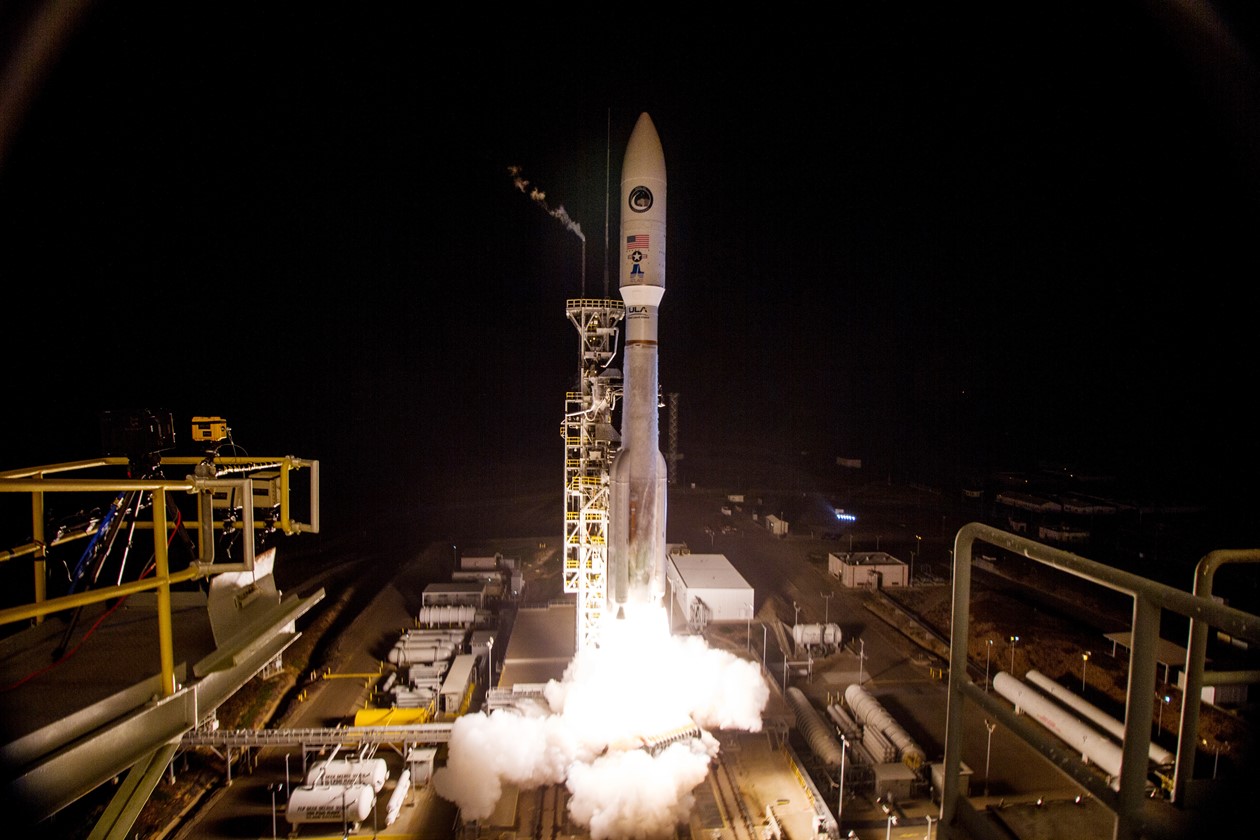Secret Spy Satellite Launches Atop Atlas V Rocket
The United States has another eye in the sky.
The NROL-42 spy satellite lifted off from California's Vandenberg Air Force Base this morning (Sept. 24) at 1:49 a.m. EDT (0549 GMT; 10:49 p.m. Sept. 23 local California time), streaking skyward atop a United Launch Alliance Atlas V rocket.
NROL-42 is the latest addition to the fleet of spacecraft built and operated by the National Reconnaissance Office (NRO). NRO satellite missions are classified, so it's unclear what orbit NROL-42 will occupy, or what exactly the craft will be doing as it zooms around Earth. [The Most Dangerous Space Weapons Ever]
"This launch is the culmination of many months of work by United Launch Alliance, the National Reconnaissance Office and the 30th Space Wing," Air Force Col. Gregory Wood, 30th Space Wing vice commander at Vandenberg, said in a prelaunch statement. "All of Team Vandenberg is dedicated to mission success and proud to play a part in delivering these capabilities to our nation."
Today's liftoff marked the 15th time that an Atlas V lofted an NRO satellite. United Launch Alliance — a joint effort of aerospace companies Lockheed Martin and Boeing — now has a total of 25 NRO missions under its belt, all of them successes. (The other 10 involved Delta IV and Delta II rockets.)
The Atlas V has now flown 73 times since its 2002 debut and has not suffered a single mission failure. Notable payloads launched by the rocket include NASA's Mars rover Curiosity, the New Horizons spacecraft and the OSIRIS-REx asteroid-sampling probe, as well as the U.S. Air Force's robotic X-37B space plane. (The first four X-37B missions employed Atlas V rockets, though the fifth, which launched earlier this month, reached orbit atop a SpaceX Falcon 9 booster.)
The NRO was established in 1961, just four years after the Soviet Union's launch of the satellite Sputnik 1 kicked off the space age. The U.S. Department of Defense kept the NRO under wraps for more than three decades, finally revealing the agency's existence in September 1992.
Breaking space news, the latest updates on rocket launches, skywatching events and more!
Today's liftoff was originally scheduled to occur early Friday (Sept. 22), but ULA pushed it back to replace a faulty battery on the Atlas V.
Editor's Note: Space.com senior producer Steve Spaleta contributed to this report.
Follow Mike Wall on Twitter @michaeldwall and Google+. Follow us @Spacedotcom, Facebook or Google+. Originally published on Space.com.

Michael Wall is a Senior Space Writer with Space.com and joined the team in 2010. He primarily covers exoplanets, spaceflight and military space, but has been known to dabble in the space art beat. His book about the search for alien life, "Out There," was published on Nov. 13, 2018. Before becoming a science writer, Michael worked as a herpetologist and wildlife biologist. He has a Ph.D. in evolutionary biology from the University of Sydney, Australia, a bachelor's degree from the University of Arizona, and a graduate certificate in science writing from the University of California, Santa Cruz. To find out what his latest project is, you can follow Michael on Twitter.

